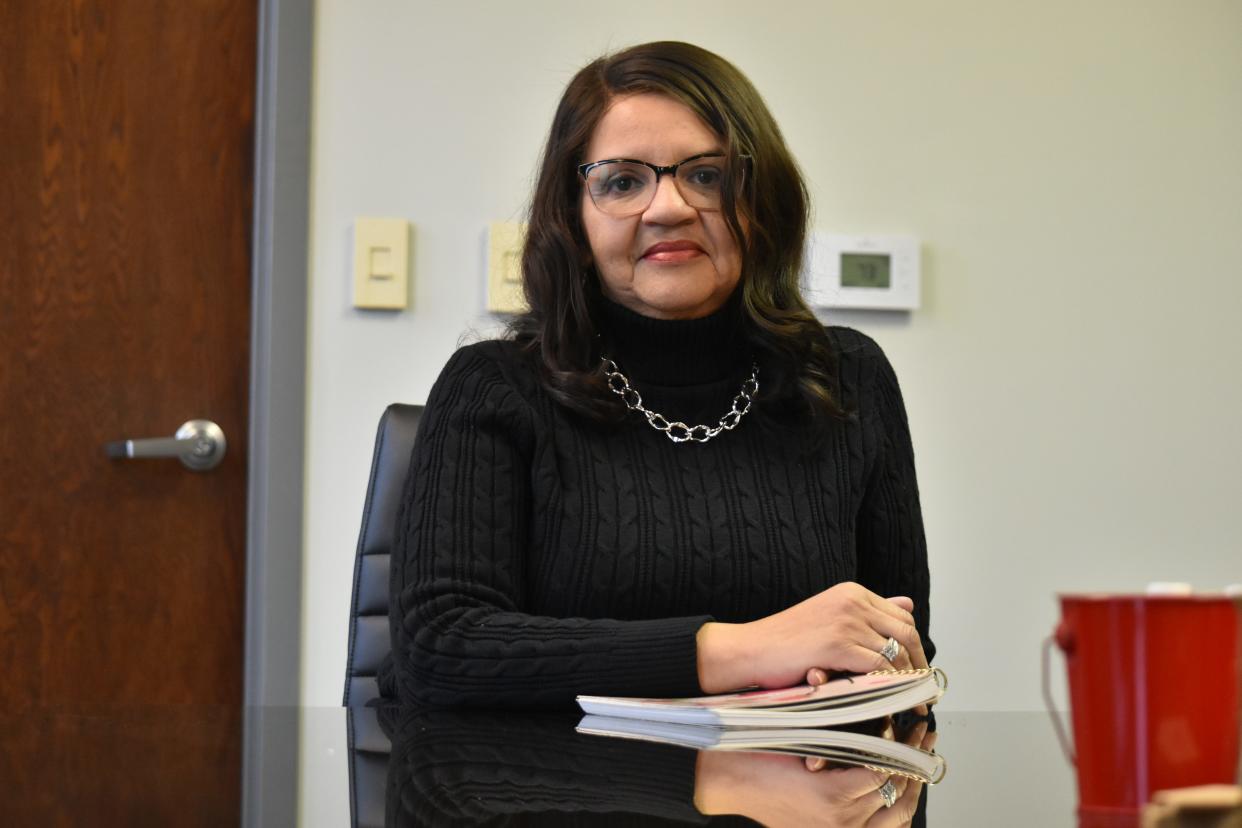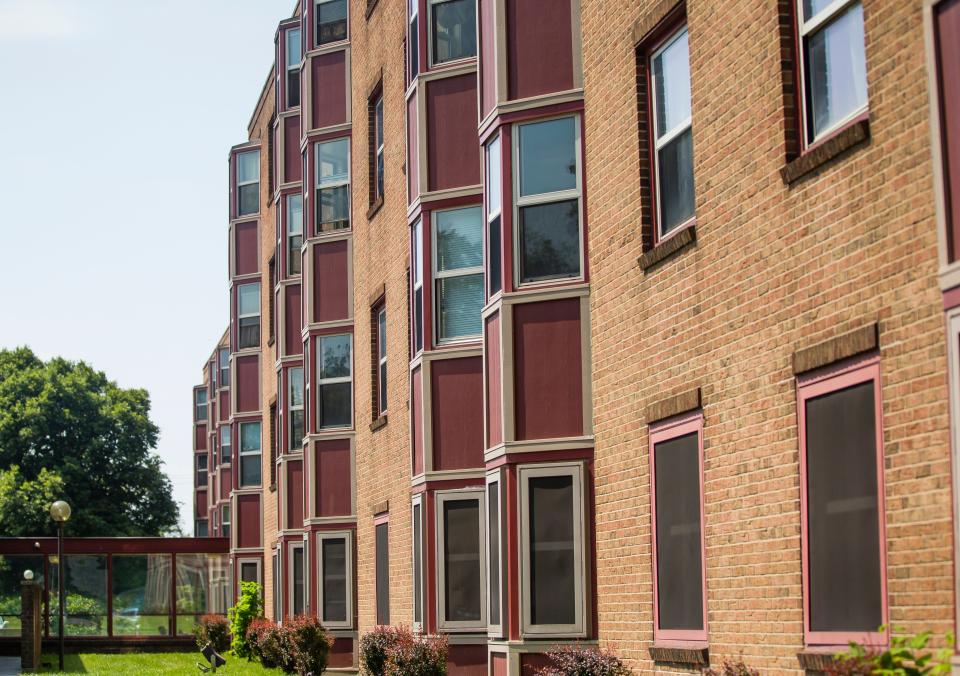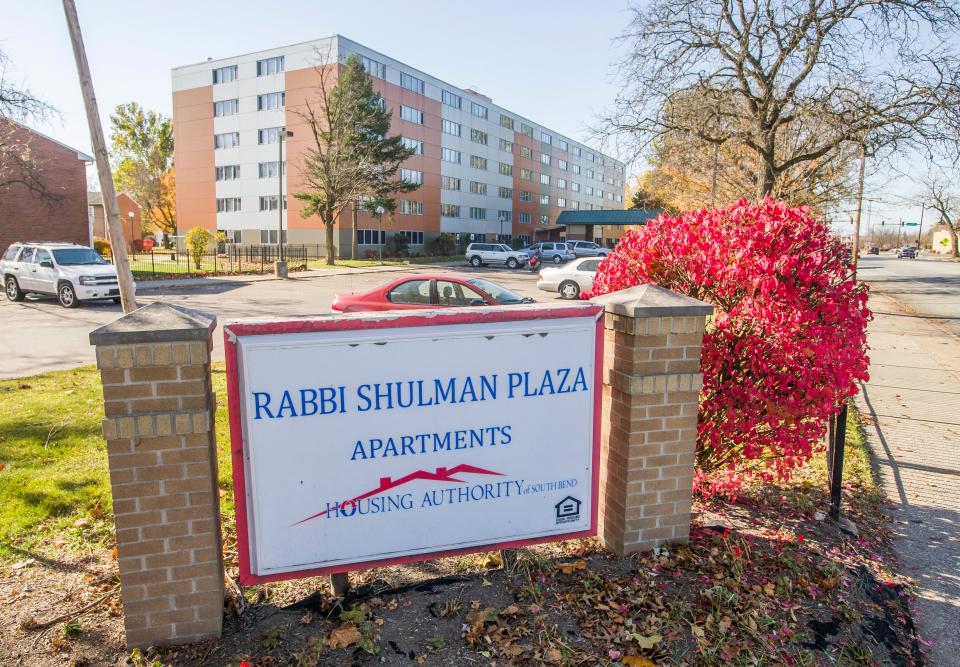New South Bend Housing Authority director's challenge: poor maintenance causes 37% vacancy

SOUTH BEND — The Housing Authority of South Bend's new director says a top priority in the opening months of her tenure is to figure out a plan for more than 200 vacant units left in poor condition by years of deferred maintenance.
In an interview with The Tribune, Marsha Parham-Green, who began her term this month, conceded that the agency's vacancy rate — the number of units empty among all active housing authority properties — is alarmingly high. A November report showed that 219, or 37%, of 594 units owned by the agency sat vacant.
Put another way, more than one in three housing authority properties is empty instead of providing a home to one of hundreds of low-income tenants on a waiting list.
The units sit empty while the city's poorest households are in dire need of more housing. A recent study by the Kinder Institute for Urban Research, commissioned by the city of South Bend, found a 2,500-unit shortage facing South Bend’s poorest households, who earn less than $15,000 a year and make up an estimated 18% of residents.
More: How South Bend leaders seek to tame housing prices through support for all new construction
Moreover, while the units are vacant, the housing authority isn't collecting any rent revenue from them. Residents of public housing generally pay 30% of their monthly income toward rent.
The properties need extensive repairs that can't easily occur while people live in them, Parham-Green said. And the agency lacks both the lump sum of money and the maintenance personnel it needs to knock out all the renovations.
"I'm going to be really pushing people hard to get these units online, even if it means we have to bring in outside contractors," Parham-Green told The Tribune in the HASB offices recently, "because we have families on waiting lists that need to be served."
As of October, HASB's waiting list for low-income public housing had 767 applicants. Its waiting list for the more popular Housing Choice Voucher program, which allows low-income renters to pay only 30% of their monthly income to stay in privately owned apartments, included more than 1,300 people.
Between the two programs, the agency serves about 2,700 households, according to the November report.
The board announced in November that Parham-Green, 60, would be the new director.
Since 2012, she had served as the executive director of the Baltimore County Office of Housing. Her accomplishments include helping to remove the "troubled" designation assigned to the agency by the Department of Housing and Urban Development and growing the authority's annual budget by 61%. By the end of her term, she was responsible for a $92 million budget.
Her work in public housing follows a long career in finance. She worked 18 years for IBM and as the chief financial officer of an all-girls Catholic school, she said.
The decline of public housing
Several people interviewed by The Tribune attributed the high vacancy rate to a mix of factors. For one, housing authorities across the nation have delayed repairs to decades-old buildings in response to shrinking federal funding for public housing.
Robert Collinson, an assistant professor of economics at the University of Notre Dame who researches housing policy, said most public housing developments were built from the 1950s to the 1970s.
In the following decades, funding for publicly owned housing decreased in favor of programs that involve private investors. That led to the growth of the Housing Choice Voucher Program, formerly known as Section 8, and the Low-Income Housing Tax Credit program, which allows investors to offset their tax burdens in exchange for putting money into the construction of low-income housing.
Meanwhile, public housing continued to age without diligent upkeep.
"We have a public housing inventory that's in disrepair in a lot of communities," Collinson said. "There's not an obvious huge infusion of capital that will come in and rescue all these developments."
HASB receives an annual budget from HUD, but it doesn't collect revenue raised through local taxes the way government agencies run by cities or counties do.
A board report shows that HASB's total budget for fiscal year 2024, which began in September, is about $30.5 million. HASB's budget for fiscal year 2023 was about $23.6 million.
According to Andy Delaney, HASB's chief financial officer, about $20.7 million of this year's budget will go toward the Housing Choice Voucher program. About $3.1 million will go toward capital improvements and $4.1 million toward public housing.
Delaney said the annual sums aren't enough to fund many of the needed unit renovations.
"We spend a lot of money to maintain the units that we have up already," Delaney told The Tribune, "and after that we try to renovate some units."
A recent presentation prepared by Catherine Lamberg, who led the agency from December 2020 to June 2023, said HASB employed one director of maintenance, 10 repair technicians and one housekeeper.
Ex-director's fraud delayed sorely needed repairs
Steve Luecke, a member of the housing authority's oversight board since 2018 and a former South Bend mayor, told The Tribune that much of HASB's property deteriorated for years under an ex-director who's been convicted of fraud.
Tonya Robinson led the agency from 2014 to 2019. A jury in November found Robinson and her subordinate Albert Smith guilty of running a scheme to authorize millions of dollars in payment checks for maintenance work that never happened.
Residents and properties reportedly suffered under her leadership. A Tribune investigation found that 75% of South Bend properties failed HUD building inspections conducted in 2017 and 2018, the worst failure rate among Indiana housing authorities with more than one property.
Most of the now-vacant units aren't uninhabitable, Luecke said, but they need serious maintenance. Agency leaders want to avoid placing families in properties that they'll soon need to vacate for prolonged renovations.
"What we've seen lately," Luecke said, "is that, as we've fixed up a unit, rather than that unit becoming available to a new family in the community, we've needed to move one of our existing residents into that unit so we could repair their unit."
"There were just so many units that needed to be brought up to standard," Luecke said, "that we were doing a lot of catch-up.”
Tribune investigation: From fire hazards to roaches: South Bend Housing Authority sites are among Indiana's worst
Where Housing Authority of South Bend has vacancies

According to the November report, the Westcott Apartments, which share a wall with the housing authority's main office at 501 Alonzo Watson Dr., reported the most vacancies. Roughly half of its 127 units sit empty because of plumbing issues that plague the building.
At Harbor Homes, a cluster of 54 brick townhomes on the outskirts of South Bend's west side, one of three homes were empty as of November. Nearly half of the 42 townhomes in the Laurel Place complex were vacant. And among the housing authority's 238 scattered sites across South Bend, 100 (42%) were unoccupied.
In the worst cases, when the cost of repairs exceeded that of demolition and new construction, deferred maintenance led to hundreds of units being leveled.
Last year, the city of South Bend gave HASB $1.6 million to tear down the Monroe Circle townhomes, eliminating 92 units just west of Four Winds Field. All of the units had been torn down by the fall.

The 127-unit Rabbi Shulman complex, Monroe Circle's neighbor to the north, will soon be demolished after a gas leak in late 2020 required hundreds of residents to move out.
Taken together, the two demolitions will leave a vacant rectangle of land between Western Avenue and South Street where up to 219 households could once live.
Lamberg, the agency's former director, was early in the process of engaging private developers to build about 300 mixed-income units in their place. The city granted HASB an additional $500,000 to prepare a grant application to HUD's Choice Neighborhoods program, which offers millions of dollars for local efforts to revitalize distressed public housing.
But in order for South Bend's public housing to shake off its "troubled" designation from HUD, Parham-Green said, repairs to decrepit properties will take precedence over plans to build new units.
"We can still entertain those ideas that were already brought forward," Parham-Green told The Tribune, "but we need to stabilize what we have, which is one of the things that HUD has said gets us off the troubled list. We’ve got to bring the units back online."

Email South Bend Tribune city reporter Jordan Smith at JTsmith@gannett.com. Follow him on X: @jordantsmith09
This article originally appeared on South Bend Tribune: Many public housing properties sit empty despite long waiting list

